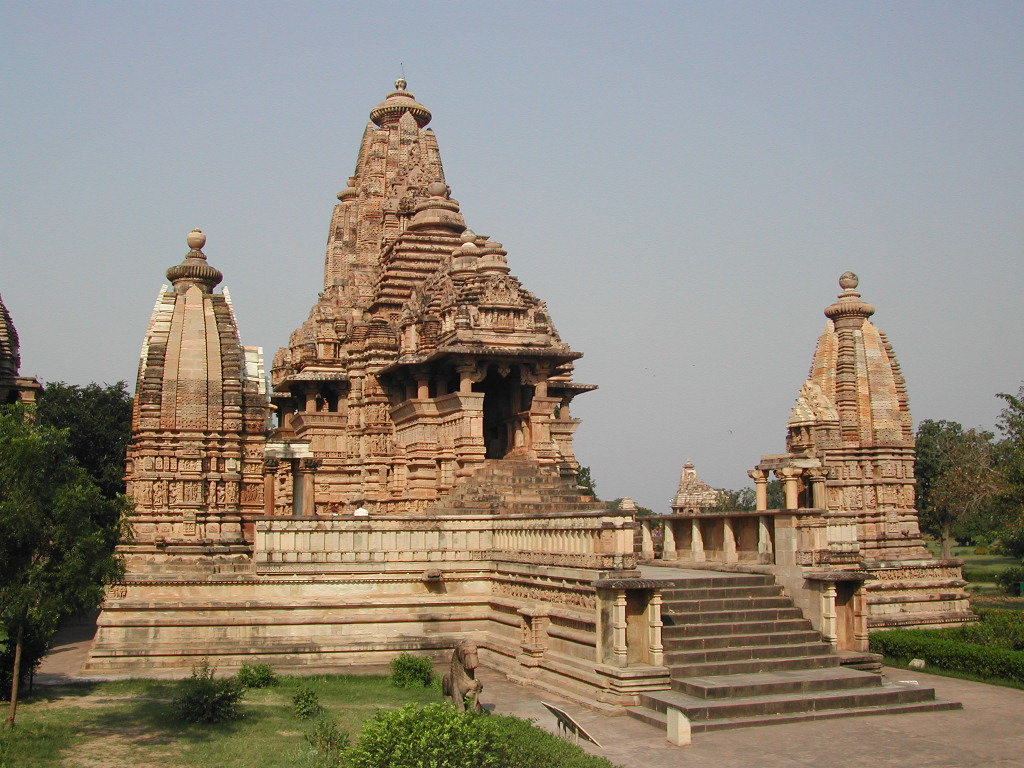Lakshmana Temple
Lakshmana Temple. Khajuraho, India. Hindu, Chandella Dynasty. c. 930–950 C.E Sandstone.
- The Lakshmana temple was the first of several temples built by the Chandella kings in their newly-created capital of Khajuraho. Between the 10th and 13th centuries, the Chandellas patronized artists, poets, and performers, and built irrigation systems, palaces, and numerous temples out of sandstone.
- 80 temples existed at this site, including several Hindu temples dedicated to the gods Shiva, Vishnu, and Surya.
- Approximately 30 temples remain at Khajuraho today.
- The Lakshmana Temple is an excellent example of Nagara style Hindu temple architecture.
- the shrine of Nagara temples include a base platform and a large superstructure known as sikhara (meaning mountain peak), which viewers can see from a distance.
- Devotees approach the Lakshamana temple from the east and walk around its entirety—an activity known as circumambulation. They begin walking along the large plinth of the temple’s base, moving in a clockwise direction starting from the left of the stairs. Sculpted friezes along the plinth depict images of daily life, love, and war and many recall historical events of the Chandella period
- Other sculpted forms appear nearby in lively, active postures: swaying hips, bent arms, and tilted heads which create a dramatic “triple-bend” contrapposto pose, all carved in deep relief emphasizing their three-dimensionality.
- The act of circumambulation, of moving around the various components of the temple, allow devotees to physically experience this sacred space and with it the body of the divine.
